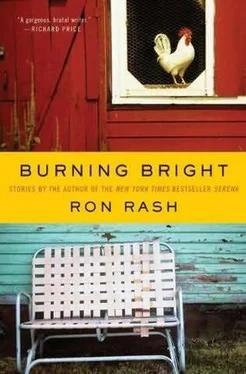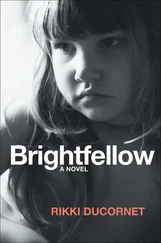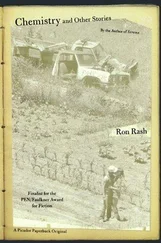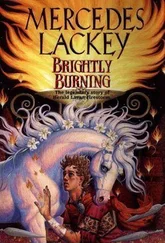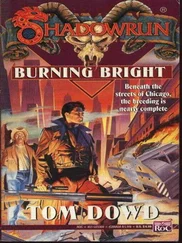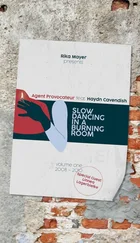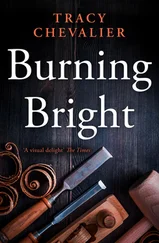But now as she drives west toward Columbia, Ruth again sees the jaguar and the palmetto trees it walks through. She wonders why in the intervening decades she has never read or heard anyone else mention that jaguars once roamed South Carolina. Windows up, radio off, Ruth travels in silence. The last few days were made more wearying because she’s had to converse with so many people. She is an only child, her early life long silences filled with books and games that needed no other players. That had been the hardest adjustment in her marriage-the constant presence of Richard, though she’d come to love the cluttered intimacy of their shared life, the reassurance and promise of “I’m here” and “I’ll be back.” Now a whole day can pass without her speaking a word to another person.
In her apartment for the first time in three days, Ruth drops her mail on the bed, then hangs up the black dress, nudges the shoes back into the closet’s far corner. She glances through the bills and advertisements, but stops, as she always does, when she sees the flyer of a missing child. She studies the boy’s face, ignoring the gapped smile. If she were to see him, he would not be smiling. Her lips move slightly as she reads of a child four feet tall and eighty pounds, a boy with blond hair and blue eyes last seen in Charlotte. Not so far away, she thinks, and places it in a pocketbook already holding a dozen similar flyers.
No pastel sympathy cards brighten her mail. A personal matter, Ruth had told her supervisor, and out of deference or indifference the supervisor hadn’t asked her to explain further. Though Ruth’s worked in the office sixteen years, her coworkers know nothing about her. They do not know she was once married, once had a child. At Christmas the people she works with draw names, and every year she receives a sampler of cheeses and meats. She imagines the giver buying one for her and one for some maiden aunt. There are days at the office when Ruth feels invisible. Coworkers look right through her as they pass her desk. She believes that if she actually did disappear and the police needed an artist’s sketch, none of them could provide a distinguishing detail.
Ruth walks into the living room, kneels in front of the set of encyclopedias on the bottom bookshelf. When she was pregnant, her mother insisted on making a trip to Columbia to bring a shiny new stroller, huge discount bags of diapers, and the encyclopedias bought years ago for Ruth.
They’re for your child now, her mother had said. That’s why I saved them.
But Ruth’s child lived only four hours. She was still hazy from the anesthesia when Richard had sat on the hospital bed, his face pale and haggard, and told her they had lost the baby. In her drugged mind she envisioned a child in the new stroller, wheeled into some rarely used hospital hallway and then forgotten.
Tell them they have to find him, she’d said, and tried to get up, propping herself on her elbows for a moment before they gave way and darkness closed around her.
Richard had wanted to try again. We’ve got to move on with our lives, he’d said. But she’d taken the stroller and bags of diapers to Goodwill. In the end only Richard moved on, taking a job in Atlanta. Soon they were seeing each other on fewer and fewer weekends, solitude returning to her life like a geographical place, a landscape neither hostile nor welcoming, just familiar.
That their marriage had come apart was not unusual. All the books and advice columnists said so. Their marriage had become a tangled exchange of sorrow. Ruth knew now that it had been she, not Richard, who too easily had acquiesced to the idea that it always would be so, that solitude was better because it allowed no mirror for one’s grief. They could have had another child, could have tried to heal themselves. She’d been the unwilling one.
Ruth rubs her index finger over the encyclopedia spines, reading the time-darkened letters like braille. She pulls the J volume out, a cracking sound as she opens it. She finds the entry, a black-and-white photograph of a big cat resting in a tree: Range: South and Central America. Once found in Texas, New Mexico, Arizona, but now only rare sightings near the U.S.-Mexico border.
There is no mention of South Carolina, not even Florida. Ruth wonders for the first time if perhaps she only imagined seeing the jaguar in the schoolbook. Perhaps it was a mountain lion or bobcat. She shelves the encyclopedia and turns on her computer, types jaguar South Carolina extinct into the search engine. After an hour, Ruth has found three references to Southeast United States and several more to Florida and Louisiana, but no reference to South Carolina. She walks into the kitchen and opens the phone book. She calls the state zoo’s main number and asks to speak to the director.
“He’s not here today,” the switchboard operator answers, “but I can connect you to his assistant, Dr. Timrod.”
The phone rings twice and a man’s voice answers.
Ruth is unsure how to say what she wants, unsure of what it is that she wants, other than some kind of confirmation. She tells her name and that she’s interested in jaguars.
“We have no jaguar,” Dr. Timrod says brusquely. “The closest would be in Atlanta.”
Ruth asks if they were ever in South Carolina.
“In a zoo?”
“No, in the wild.”
“I’ve never heard that,” Dr. Timrod says. “I associate jaguars with a more tropical environment, but I’m no expert on big cats.” His voice is reflective now, more curious than impatient. “My field is ornithology. Most people think parakeets are tropical too, but once they were in South Carolina.”
“So it’s possible,” Ruth says.
“Yes, I guess it’s possible. I do know buffalo were here. Elk, pumas, wolves. Why not a jaguar.”
“Could you help me find out?”
As Dr. Timrod pauses, she imagines his office-posters of animals on the walls, the floor concrete just like the big cats’ cages. Maybe a file cabinet and bookshelves but little else. She suspects the room reeks of pipe smoke.
“Maybe,” Dr. Timrod says. “I can ask Leslie Winters. She’s our large animal expert, though elephants are her main interest. If she doesn’t know, I’ll try to do a little research on it myself.”
“Can I come by the zoo tomorrow to see what you’ve found?”
Dr. Timrod laughs. “You’re rather persistent.”
“Not usually,” Ruth says.
“I’ll be in my office from ten to eleven. Come then.”
Ruth calls her office and tells the secretary she will be out one more day.
The needs of the dead have exhausted her. Too tired to cook or go out, Ruth instead finishes unpacking and takes a long bath. As she lies in the warm, neck-deep water, she closes her eyes and summons the drawing of the jaguar. She tries to remember more. Was the jaguar drawn as if moving or standing still? Were its eyes looking toward her or toward the end of the page? Were there parakeets perched in the palmetto trees above? She cannot recall.
Ruth does not rest well that night. She has trouble falling asleep and when she finally does she dreams of rows of bleached tombstones with no names, no dates etched upon them. In the dream one of these tombstones marks the grave of her son, but she does not know which one.
Driving through rush-hour traffic the next morning, Ruth remembers how she made the nurse bring her son to her when the drugs had worn off enough that she understood what lost really meant. She’d looked into her child’s face so she might never forget it, stroking the wisps of hair blond and fine as corn silk. Her son’s eyes were closed. After a few seconds the nurse had gently but firmly taken the child from her arms. The nurse had been kind, as had the doctor, but she knows they have forgotten her child by now, that his brief life has merged with hundreds of other children who lived and died under their watch. She knows that only two people remember that child and that now even she has trouble recalling what he looked like and the same must be true for Richard. She knows there is not a single soul on earth who could tell her the color of her son’s eyes.
Читать дальше
